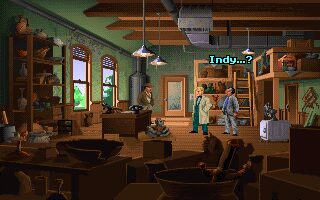Since their humble beginnings as text-based narratives, adventure games have come a long way. Over the years, they have evolved and transformed into immersive and visually stunning experiences. Text-based adventure games, or interactive fiction, emerged in the late 1970s and early 1980s. These games relied solely on text descriptions to guide players through a story, allowing them to make choices that would affect the outcome. Computer text adventure games started with Scott Adam's Adventureland, but the most famous one is probably Zork: The Great Underground Empire by Infocom. The company created many other excellent titles, including Starcross and Planetfall, released in 1983.
Sierra On-Line was the first to produce a graphic adventure, with Mystery House, but the first important title was King's Quest, also known as King's Quest I: Quest for the Crown. After this, Sierra continued to create many other great games like Space Quest I: Roger Wilco in the Sarien Encounter and continued for many years, at least until King's Quest VII: The Princeless Bride.
In graphic adventure games, the player sees the story on the screen, and the visuals change and reflect his actions, so the graphics are part of the gameplay. Text adventures with pictures are different. In this case, images are just helpful (but not necessary) gameplay elements accompanying the player. Some examples of this genre are Magnetic Scroll's masterpieces The Pawn and Fish!.
Initially, graphic adventures were based on a text parser, just like text adventures, but later they adopted a point-and-click interface. LucasArts legendary titles such as Zak McKracken and the Alien Mindbenders and Maniac Mansion were the pioneers. Still, the real success arrived with Indiana Jones And The Last Crusade, Indiana Jones And The Fate Of Atlantis, The Secret of Monkey Island, and many other incredible games.
But the adventure games genre does not include only text adventures and classic graphic adventures. We have many sub-genres, like the adventure-rpg horror titles of Adventure Soft, like Elvira: Mistress of the Dark, first-person puzzle adventure games like Myst, isometric action adventures like Cadaver by Bitmap Brothers, or the ZX Spectrum classic Knight Tyme, or to mention a more recent game, the psychological horror Sanitarium.
In many adventures of the '90s, you can enjoy fantastic hand-drawn animations and terrific 2D graphics; see, for example, Broken Sword: The Shadow of the Templars or Torin's Passage.
There is no scarcity of adventure games out there; it's one of the most beloved genres of computer games. From old classic titles to more modern adventures, you will find enough titles to keep you occupied for years. Happy adventuring!














